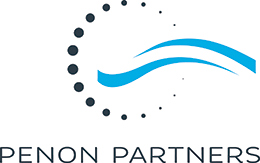The Case for ACH Payments
Am I the only European surprised by how frequently checks are used in the United States? In a world where digital transactions are nearly instantaneous, it’s interesting to see the continued use of paper checks. When assessing a P2P process, I always recommend transitioning to Automated Clearing House (ACH). It’s a compelling solution for better efficiency. Here is why…
Why Should You Transition from Check Payments to ACH?
- It’s Faster:
ACH payments reduce manual handling. Manual entries, mailings, and check handling are eliminated, streamlining the entire payment process. ACH payments are also processed quicker than checks, significantly reducing the time between payment issuance and receipt.
- It’s Safer:
ACH payments offer better security features. Checks are susceptible to fraud through physical handling and interception. ACH transactions are electronically recorded, providing an audit trail for better transparency and compliance.
- It Offers Better Quality:
Electronic payments reduce the incidence of errors, costly corrections, and reconciliations, improving vendor and internal relationships.
- It Should Be Cheaper:
Processing checks involves significant costs due to verification, handling, and transportation, impacting all stakeholders, including banks. While banks often provide check services for free, they charge fees for ACH payments. However, the indirect costs of manually handling checks can exceed the direct costs of ACH fees. To truly benefit from ACH, it’s important for businesses to negotiate with banks to reduce these fees and recognize the long-term savings and efficiency gains of electronic payments.
How to Implement ACH Payments?
- Initial Setup: Start by engaging with your bank to set up ACH payment capabilities. Consider negotiating for lower fees.
- System Integration: Ensure your ERP system is properly configured and integrated to handle ACH payments.
- Educate Your Team and Vendors: Provide training for your financial team and communicate with your vendors about the transition to ACH. Explain the benefits and changes in payment processes.
- Monitor and Adjust: Continuously monitor the new system for any issues or areas of improvement. Solicit feedback from users and vendors to optimize the payment process.
Switching from checks to ACH payments not only aligns businesses with modern financial practices but also offers significant efficiency, cost savings, and security benefits. By adopting ACH, companies can enhance their operational efficiency, reduce vulnerabilities, and foster better relationships with their partners and vendors.
Any thoughts on transitioning to ACH payments? Feel free to share your experiences or concerns!
Interested in optimizing your Purchase to Pay process?
Contact Penon Partners for a comprehensive P2P assessment and discover how we can help transform your financial operations.

